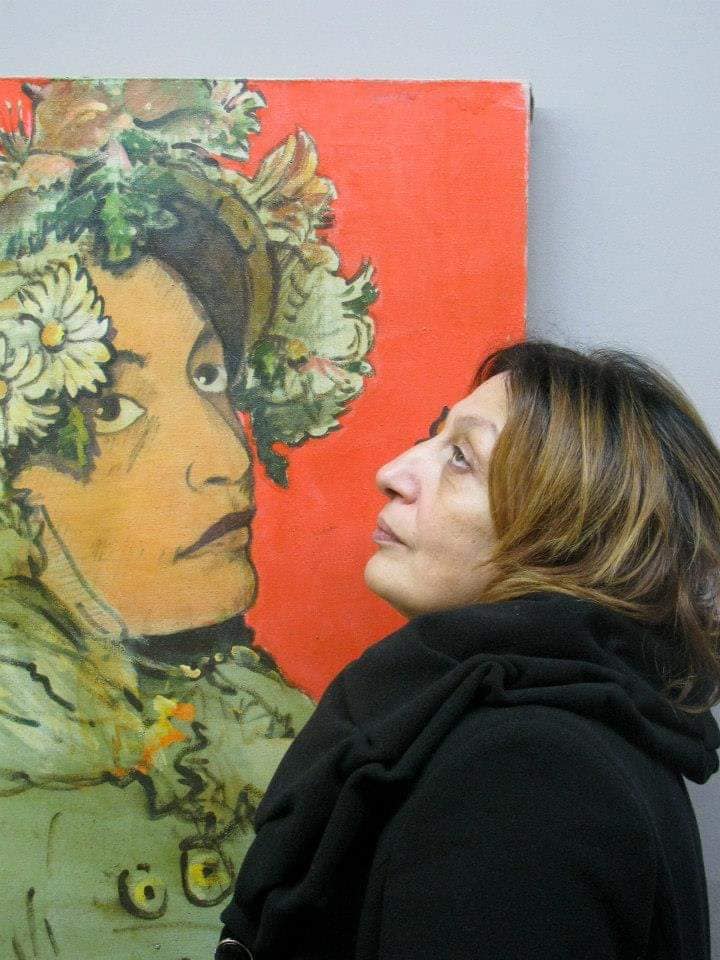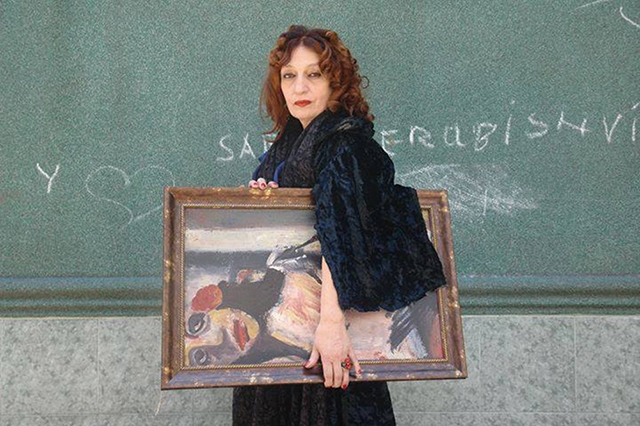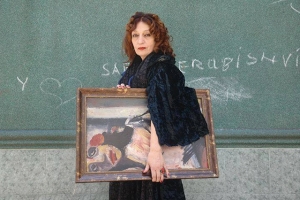Interview with an Artistic Couple, Part 2: Lia Shvelidze
INTERVIEW
GEORGIA TODAY, at the invitation of BI Auction, sat down for an interview with a couple of artists who are very important for the Georgian contemporary art scene: Mamuka Tsetskhladze and Lia Shvelidze. The painter husband-and-wife discussed with us their growing up in the Soviet Union, their art influences, the story of how they met, and walk us through the process of the creative work. This week, we hear from Lia.
“I was born in a family of artists. My father is a painter, so I watched him paint and give lessons to his students as I was growing up. The moment of deciding it was what I wanted to do for the rest of my life was a very interesting moment. At the age 16, I was graduating from school. I was good at French so they thought I would go into the Foreign Language Institute, but I started crying and announced that I wanted to be an artist. My father warned me it would be a very difficult choice. From today’s perspective, I realize that people choose professions that are good for their health and psyche, and if the choice is not right it can become a problem. It was the right choice for me.”
Who had the biggest impact on your work early in your career?
Again, it came from myself and the environment I lived in. Mamuka’s case was different: he was not born into a family of artists but they did everything they could to support his passion and desire to create. I think that’s pretty big. When you are born into an artist's family there is no conflict and it just comes naturally.
And now, when you paint are you influenced by someone?
An artist always feels influence. We are an extension of this huge cultural heritage and it’s a good thing, because it makes you a part of the great culture that Mankind has created. A lot of things are dictated by mood: you might be thinking about Basquiat and discover Leonardo's line in your work.
How important is professional education in the development of an artist‘s creativity and becoming a great painter?
The word creativity is very much associated with painting and I think it’s wrong. One can creatively decorate a table or design a dress, but painting needs to be taken more seriously. Associating painting with mere creativity belittles the art of painting a little bit. Of course, professional education is important, but artistic intelligence is more so. The era you were born in is also significant. Painters create an era, fashion, style. Every era has positive sides and gives its specific immunity to people surviving that era. Some develop this immunity and create high quality art, some fail.
Did you encounter any opposition under the soviet system that limited your creativity in painting?
On the contrary, it strengthened me. During my student years, when I took up painting, it had its own rules and these rules were framed as Soviet Art. Because of the restrictions and limits set by the soviet government, I decided to move to the Faculty of Theater. It gave me freedom in art in general, because there I didn’t have to paint compositions of limited themes. It was the time of the Iron Curtain and you could only see some art pieces in black and white reproduction. Impressionism was not forbidden in the Soviet Union, Picasso was already a Communist artist and was widely propagated by the Soviet state. The most interesting thing was when I graduated and I thought with a diploma in my hand, they would exhibit my pieces in galleries without any problem. Yet even though I was a daughter of a painter, and had a diploma in my hand, they didn’t accept my work. When I asked why, I was told my painting was too small in size. Since then, I’ve been painting my works on large canvas: they made me insecure in that way, I guess! Like I said, this resistance makes some stronger, some weaker.
Did you ever experience counter-culture during the soviet regime? Did you experiment with ‘sots-art’?
I have no boundaries. Painting is good because you are free to do whatever you want to do. You can see that this is my approach when you take a look at my work. We were very lucky to have started working in the studio which was located in the building of the Kote Marjanishvili State Academic Drama Theater, we had big canvases and we were making the pigments by ourselves. The scenography and costume painting was a great experience for me. There are a lot of painters that after having finished the academy, just continue to develop what they learned in there. I was lucky that way, too: it was like I completed one stage at the Academy, and then I became an artist.

Moving on to contemporary art, what is your view of the modern Georgian art scene?
Contemporary painting is very generous in its forms, and interesting, but from my experience it is a little boring. I can’t blame Georgian artists or their education; it’s more the fault of social division, and many other reasons. We had a much more exciting time back then when I was young: we were fighting for something. Now it seems we have nothing to fight for. That is why I see many modern art pieces as “second-hand”. For example, what was made during conceptualism abroad is now made in Georgia and somehow they think that it was Georgia that came up with it, and now this video art has emerged. It is secondary too.
You say you need something to fight against to be inspired. What is the greatest inspiration for you now?
The paintings that were created before me. This is a great source of inspiration, but you might see a bird flying by and it can give birth to a lot of new ideas within you.
How do you feel about the role of BI Auction in connecting art and the people?
Auctions are very important in keeping art alive, but the people who go to the auction are already supposed to have some background education in the arts. School education is important, the education from family is important, and self-education is important to really get into the depths of art. You can develop this by going to museums, auctions, etc. But above all, education is the most important, I think.
What are your future plans?
I have bought some big canvases and I want to paint very beautiful paintings. That is my main goal – to paint something wonderful, and beautiful.
Do you have any advice for young striving artists?
I’ve had a studio for 5 years, and I teach those interested in art there. My main goal is to have those who already have that spark of art in them fall in love with it even more. Painting is time consuming: it takes a lot of energy from you, since you need to be really involved in the art scene. They need to see every exhibition, the good ones and the bad. We all went to many exhibitions, and the key to understanding the exhibition process is that if you don’t love a piece, you should be able to explain why. The ability to analyze is crucial for a painter. So I want to wish them a lot of success – it is a great profession. It can really bring a lot of joy.
By Nini Dakhundaridze

Related story
Interview with an Artistic Couple, Part 1: Mamuka Tsetskhladze











